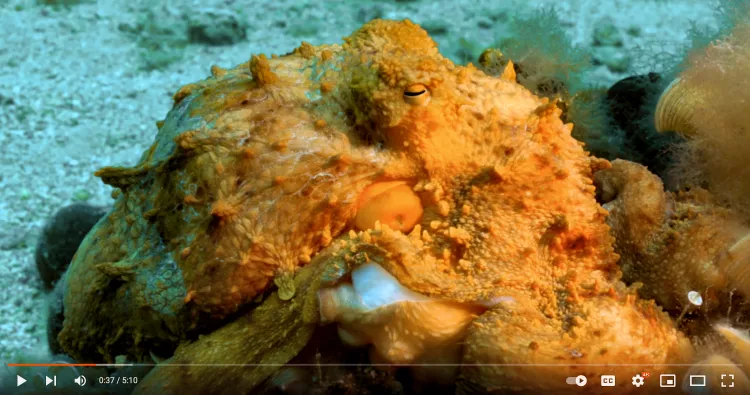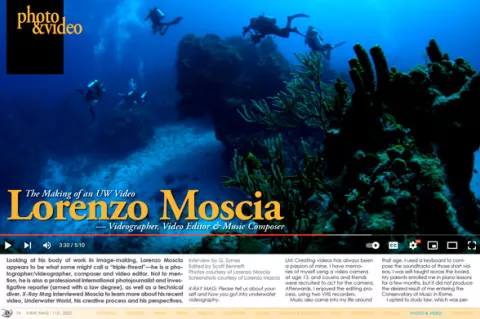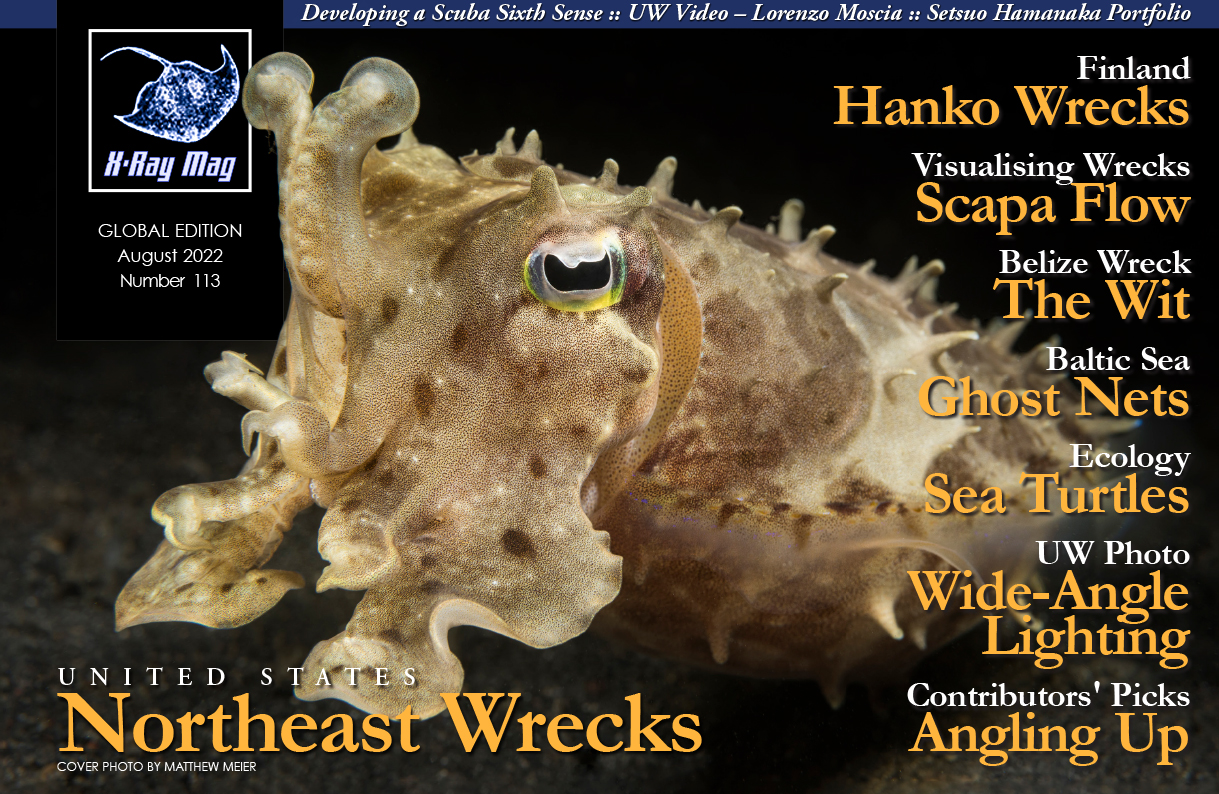Looking at his body of work, Lorenzo Moscia appears to be a “triple-threat”—he is a photographer / videographer, composer and video editor. He is also a photojournalist and investigative reporter with a law degree, and a technical diver. X-Ray Mag interviewed him to learn more about his recent video, Underwater World, his creative process and his perspectives.
Contributed by
X-RAY MAG: Please tell us about yourself and how you got into underwater videography.
LM: Creating videos has always been a passion of mine. I have memories of myself using a video camera at age 13, and cousins and friends were recruited to act for the camera. Afterwards, I enjoyed the editing process, using two VHS recorders.
Music also came into my life around that age. I used a keyboard to compose the soundtracks of those short videos. I was self-taught across the board. My parents enrolled me in piano lessons for a few months, but it did not produce the desired result of me entering the Conservatory of Music in Rome.
I opted to study law, which was perhaps a choice more dictated by a series of exclusions rather than any real conviction. I got my degree and practised as a divorce lawyer for two years.
During a vacation in Chile, I discovered a passion for photography and stayed with a small local community on Easter Island for a few weeks. Upon returning to Rome, I discovered that only two of my photos were decently exposed, out of the twenty or so rolls of film I had taken. The photos then fell into the hands of a journalist friend, who suggested that I write an article and try to publish it. I was lucky and received my first payment after publication.
I decided to return to Easter Island to deepen my photographic reporting. The result was an exhibition in Santiago de Chile, financed by the Italian Embassy, as well as a book of photographs.
I decided to give up my profession as a divorce lawyer and stayed in Chile, where I collaborated with international agencies and magazines, both Chilean and foreign, and specialised in long-term investigative assignments.
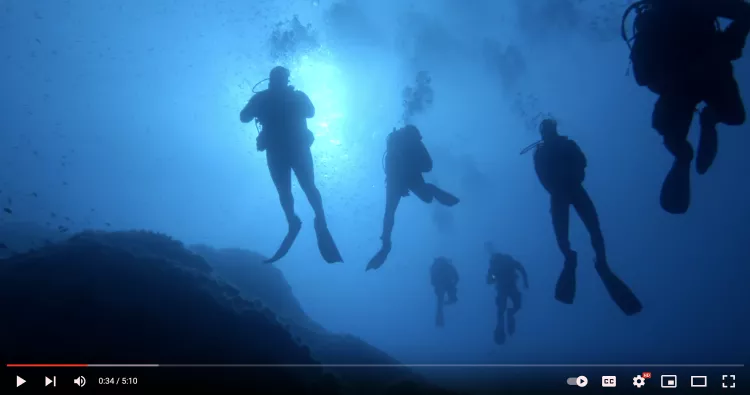
Rather than just following a news story, I was dedicated to exploring a specific social reality, using my photos to convey an intimate and somehow poetic story.
My work philosophy was to consider every social group as a kind of tribe—be it a platoon of the Chilean army stationed in Haiti during the civil war, a police patrol controlling the streets of Santiago de Chile, or a group of criminals running a favela in Rio de Janeiro, I must try to fit in and be accepted. Only then could I take out my camera and start shooting.
Diving started to enter my life while I was in Chile, obviously on Easter Island, but also while on assignments in the deep south of the country. Then, in a photo contest, I won a Nikonos 5, an underwater camera that I started using during a series of dives in volcanic locations. It was exciting to be able to shoot underwater.
I used to go with a local expert diver who often worked with the police to find bodies in rivers and lakes. He had recovered a huge number of corpses and helped give a face and a burial to the desaparecidos after the end of Pinochet’s military regime. He allowed me to use the tanks without a licence if I gave him the best shots.
We would dive in clear, cold lakes at shallow depths not exceeding 10 metres. I continued diving without a licence in Chile, during the first few years of the millennium. Looking back, I cannot help but consider the recklessness and imprudence that surrounded all those experiences.
It was very challenging to shoot underwater at that time. The Nikonos 5 was solid as a rock, but the 35mm lens had a very narrow field of view, which was inadequate for panoramic images. You had to focus manually, using the distance scale markings on the focus ring positioned on the front. The ISO was, of course, fixed, and I did not invest in a strobe; in short, techniques I was accustomed to using on land required a greater degree of effort underwater.
All of this discouraged me from going further into underwater photography. So, I sold the Nikonos 5, a decision I still regret to this day!
Nevertheless, diving always remained in the back of my mind for the next 13 to 15 years. When I came across a documentary or a book of underwater photography, I was always fascinated, leafing through it for hours.
It was not until the summer of 2016, while working for Greenpeace on the Italian island of Pantelleria, contemplating the crystal-clear waters while snorkelling, that I finally said to myself, “Enough!” I vowed to get serious about studying scuba diving, taking at least the first certification and starting to dive properly, as well as finding the best and most secure way to bring my camera underwater.
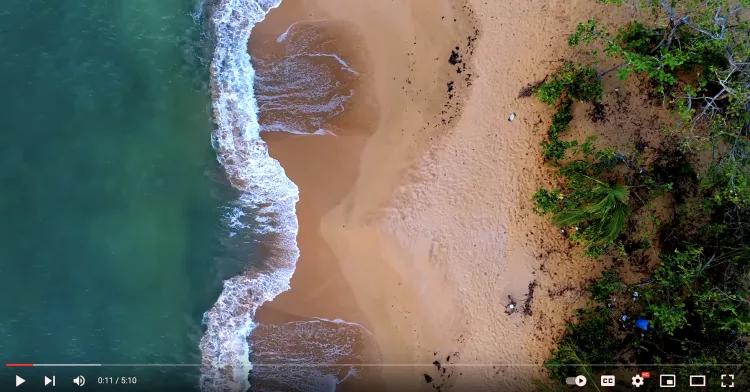
X-RAY MAG: What equipment and gear do you use underwater?
LM: My investment in diving has been slow, thoughtful, and preceded by careful analysis, but not without anxiety. With three children and the lack of a steady salary that comes with freelance photography, every penny counts.
My first housing for my Canon 6D camera was from an Italian company called NiMar. It was made of plexiglass, with a dome for the 16.35 f/2.8 lens. It was the most economical serious camera I could find on the market.
In the summer of 2016, I got my Open Water certificate with a 60-year-old Italian instructor, who was described by the local diving community as a worthy representative of the “old school.” Ettore loved to teach the hard way. While underwater, he would take off my mask without warning, close my tanks or rip off my regulator. On the other hand, his passion for the sea, his toughness and generosity will be with me forever.
In September 2016, I was in California for an assignment and decided to fly to Hawaii where I could stay for free at a friend’s house on the Big Island. Even though I had my dive certificate with me, I was not confident enough, but I did use the housing while snorkelling, just to get familiar with the controls.
In 2018, after getting the SSI Deep Diving certification, I decided to switch to an aluminium housing, as the buttons on the plexiglass case had disappointed me on numerous occasions, especially at depths over 30 metres. After exploring various alternatives, I decided on a Nauticam housing, considering that near my house in Rome was Pietro Cremone, an excellent underwater photographer and Nauticam representative. This guaranteed me assistance and immediate maintenance as well as excellent access to buy and sell used equipment. Pietro is a great advisor and teacher who does not skimp on advice and tips for shooting underwater.
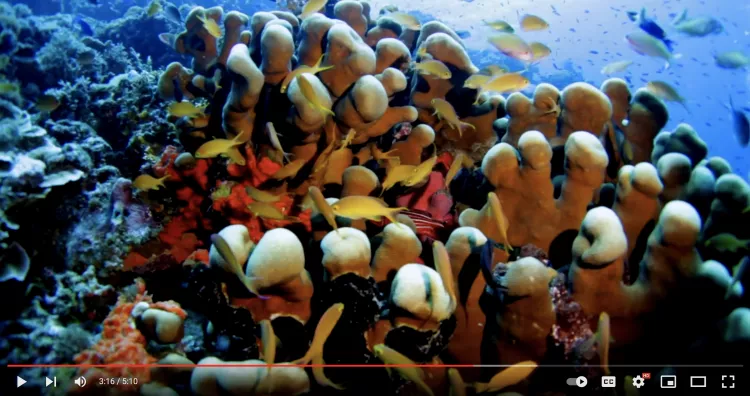
As one of my primary employers is Greenpeace, I also decided to invest in a camera body in order to deliver optimum footage.
The days when you could say that the camera is merely a tool, and all you need is your heart and head to take good pictures, are over. Please do not get me wrong; the eye and experience, the brain, the heart and intuition, are always the basis for good photography. However, there are cameras on the market that are able to shoot 4 or 8k at 120 frames, are super-stabilised and possess a dynamic range that allows one to capture every detail and colour. Obviously, the camera is not the photographer, but a good camera certainly helps to deliver the best possible product to the client.
I have been very happy with my Canon 5D Mark IV camera and would not have switched to the R5 if it had not been for the considerable leap in technology and enhancement that the R5 offered. Now, I use an R5 with an 8-15mm 2.8 lens. This lens will very likely be replaced by my 16-35mm f/2.8 lens because, especially in shooting video, it is a great tool that helps one avoid the rounded lines in shots, which are typical with a fisheye lens. At 35mm, it is a good compromise, in which one may avoid having to mount a macro lens directly onto the camera.
I am not a big fan of macro, as it has never been part of my world as a topside photographer for over 20 years. Learning how to use it properly requires time for me, but including some macro images in an assignment (reportage) with a lot of wide-angle shots helps to create variety in the final product.
I also have two lights with 15,000 lumens (the manufacturers say), which I use for both video and still photography. And I recently bought a Sea&Sea YS-D3 strobe.
Working with different NGOs (non-governmental organisations) around the world in the years before the coronavirus pandemic, I was able to take advantage of the opportunity to dive in the sea where my work would take me. I got to know the Andaman Sea in Thailand, and the reefs in the Philippines as well as Mexico.
In the Marshall Islands, I was able to appreciate the beauty of the Pacific Ocean, but without oxygen cylinders, as the American army at the military base in the area had exclusive use of air and gasses. However, snorkelling with the locals was incredible. During these trips abroad, the mini dome port for my 8-15mm camera lens proved incredibly handy.
My dive equipment was also bought in small steps. I started with a Cressi Ice 7mm semi-dry suit, and a year later, I added my first BCD (stab jacket) from the Rome-based company called Ugly Fish, two Scubapro MK17 first stages and two Scubapro S620 Ti second stages. Recently, thanks to a twin 10-litre tank recently given to me by my brother-in-law, I got another BCD with larger capacity from DiveSystem, a company based in Tuscany, and a wetsuit.
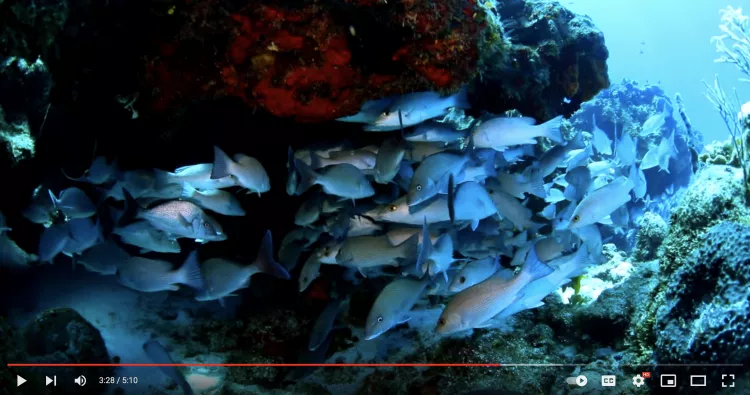
X-RAY MAG: You edit and produce your own videos. How did you become a video editor?
LM: I have always been passionate about video editing and filming. While I lived in Chile, I started working with Avid video editing software. I then switched to Final Cut, which I still use today, although I know that DaVinci should be learnt, as it is more comprehensive. I do not consider myself a professional editor, but I am in the process of learning.
X-RAY MAG: What is your creative process in postproduction and what tools do you use?
LM: I am currently using Final Cut Pro X by Apple. Depending on the material and amount of time I have to edit, I follow different creative processes. For example, I found some tapes I had shot during my coverage of the war in Libya in 2011. They were about ten hours long, and so I made a 45-minute montage that tells the story of those days—a sort of travel diary of the war.
I never write a script; the editing is done visually, by watching the clips and starting to build small stories that I then weave into a sequence, which I can only finally approve when I see the images again after letting them “rest” for a while.
For underwater videos, I try to take off with the music, to get away from any formula or sequence that I may have been following for too long; I want to try to innovate in my next releases. It starts with the trip by boat or dinghy, the preparation, some panoramic shots of the dive site and then the descent.
From a photographic point of view, I have always tried to focus on the group of divers who wander through an underwater landscape. Maybe it is a legacy of my passion for street photography, so let’s say, I try to bring underwater street photography into my videos, where there is a lot of improvisation.
When I have specific requests, it is a different story. When I documented the “Mare Caldo” (Hot Sea Water) project for Greenpeace, I dived with marine biologists who set up and collected sea water temperature sensors, which would provide a graph of rising sea temperatures. In this case, I was focused on creating images that could convey the message of that action, as well as include images of divers unfurling a banner or sign containing a specific message. Depending on the client’s requirements, I try to provide material that is either finished or may need to be edited a step further.
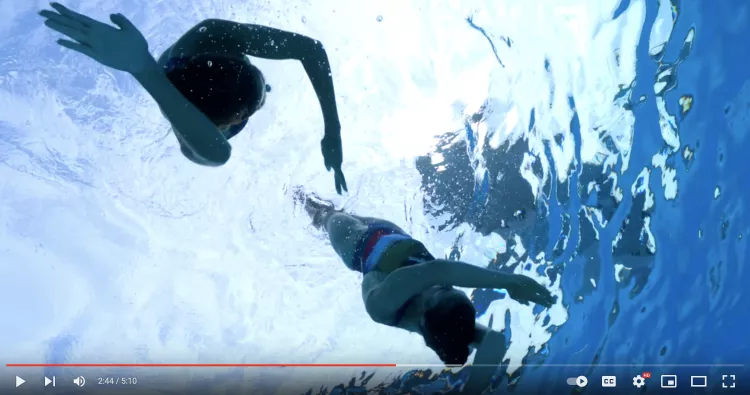
X-RAY MAG: Please tell us how you became a composer.
LM: Playing the piano has always been a fundamental part of my life, as an escape valve from stress. After the failure of my classical studies as a pianist, I studied jazz for a couple of years, where the maniacal reading of sheet music was replaced by improvisation on a chord scale. It was paradise.
I started composing around the age of 12, and between the ages of 17 and 25, I played in various bands in Rome. With one band, we played all my own compositions and those of the singer’s. It was a joy experiencing the creative process alone or together with the other band members. Over the years, I wrote various pieces both with and without lyrics, recorded with makeshift cassette players or sometimes even in recording studios.
X-RAY MAG: The soundtrack of your latest work is an original score you composed yourself. What was your inspiration? What came first, the music or the imagery?
LM: The piece I composed for the video, “Underwater World,” came out of the blue, with a very simple chord progression. There is an alternation between minor and major chords, which is repeated until it leads to a progression of minor and diminished chords. My inspiration for this soundtrack came from the late ‘90s electronic music of Massive Attack and Thievery Corporation, who used piano with a hip-hop drum base, and chamber instruments.
For this project, I wanted to create a slightly chilled-out sound, but it turned out darker and more melancholic. That is why I added the video segments of plastic pollution in the sea. It was a choice dictated by the music, rather than by cold planning. The progression of dramatic and sad chords, which come just before the midpoint of the video, recall the images that justify this heavy atmosphere.
My initial idea was to create a video that would take stock of my diving activities over the last few years—a kind of presentation or showreel to say, “This is what I did, and what I saw.” But during the production of it, I realised that I wanted it to have a message testifying to the importance of the aquatic world and its beauty, which is impressed upon those who visit it. Some swim in it, like the Italian team of divers and swimmers, while others use it as a means of survival, like the freedivers of the Marshall Islands.
The sea can also be a source of ruin and destruction, transforming itself, through no fault but our own, into a large garbage dump. It can then take revenge on us, by returning our garbage with monstrous and deadly tsunamis, as I saw in the Philippines.
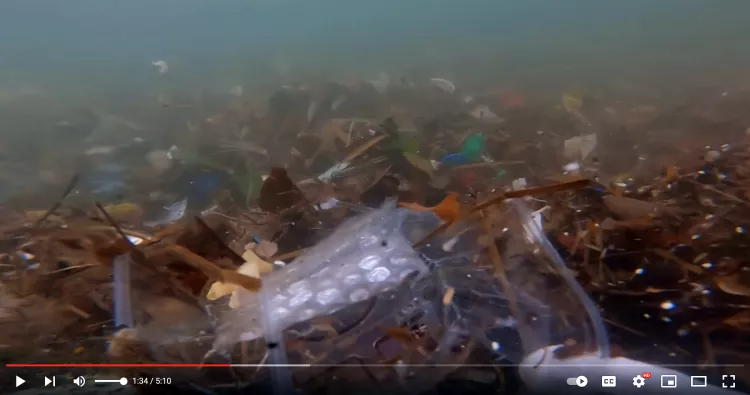
Disposable plastic is a completely superfluous element that should be eliminated on a global level. I am not talking about eliminating plastic in its entirety, but we should start by eliminating single-use plastics, which are only used once before ending up in the sea and degrading into microplastics. When we are nothing but dust in the earth, that straw that we used for a few minutes will still be in the sea, slowly decaying and clogging up the lungs of a sea turtle.
I do not agree with blaming this situation entirely on consumers. For example, a well-known brewery has just started selling beer in 33cl plastic bottles. In doing this, the profit is considerably more, since the weight of a case of plastic beer bottles is one-fifth of that in glass. What is the point in making a single mother feel guilty when she buys disposable plastic items in order to save money to celebrate her son’s birthday when a multibillion-dollar brewery sends cases of plastic bottles around the world?
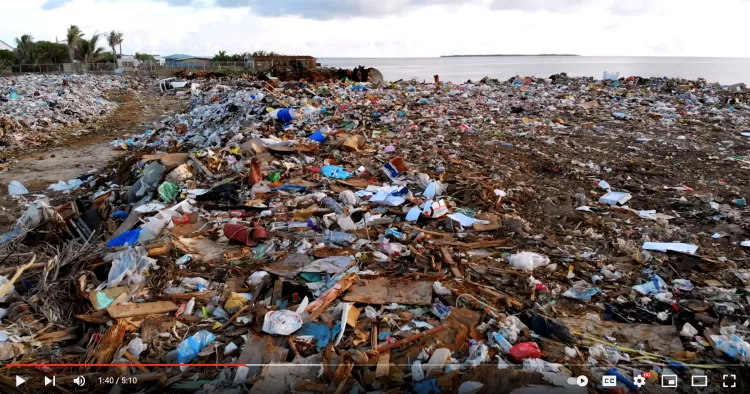
X-RAY MAG: What advice do you have for others who want to get into underwater videography?
LM: I still consider myself an apprentice, so I can give good advice to those who want to enter this profession. First and foremost, you need to have the confidence to stay underwater. For video, stability is fundamental in creating smooth images that are comparable to those of a drone surveying the landscape from a mountain top.
For approaching fish, having a closed-circuit system that does not produce bubbles is a big step. Trying to tell a story is fascinating, but also very challenging. Returning to the same dive site is very useful. I think the next challenge for me is to be able to tell the story of wrecks even at great depths, which are still perfectly preserved today.
X-RAY MAG: What is your next project, course or event?
LM: I just finished the postproduction of a documentary, which has nothing to do with the sea. It is of the last interview with Gerry Conlon, which I had the honour of being able to make shortly before he died. Gerry, whose story inspired the film In the Name of the Father, spent 15 years in prison for a crime he did not commit. Filming the whole documentary and editing it took over seven years, and now, we are close to showing it to the public.
In addition, I am studying for a second technical diving certificate to get down to 50 metres, using nitrox gas to ease decompression times on the way up. I must say that studying scuba diving and delving into the underwater world has saved me from guaranteed depression during the Covid-19 pandemic.
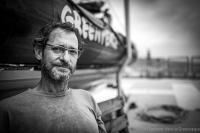
To see the video, go to: youtube.com. The video “Underwater World” and this interview is dedicated to Lorenzo Moscia’s dear friend, Alonso Muñoz, with whom he worked on the Greenpeace ship in 2017. Muñoz was a sailor and divemaster with whom the author shared his underwater photos. In honour of his memory, Moscia said, “His comments and criticism pushed me forward.”
For more information, please visit: lorenzomoscia.com
{"preview_thumbnail":"/sites/default/files/styles/video_embed_wysiwyg_preview/public/video_thumbnails/5nNYYkjCxBk.jpg?itok=eLFX_Q5V","video_url":"https://www.youtube.com/watch?v=5nNYYkjCxBk","settings":{"responsive":1,"width":"854","height":"480","autoplay":0},"settings_summary":["Embedded Video (Responsive)."]}

